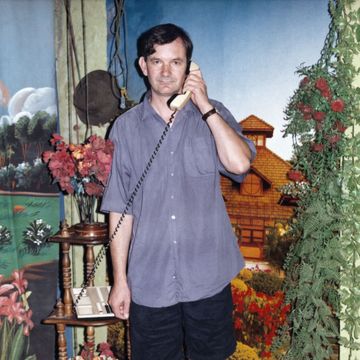Spring is the season of renewal and awakening, when we dream about the abundant promise of summer. For me, it is a poignant reminder of my cancer diagnosis in 2007. It didn’t arrive unannounced – my body was bellowing with symptoms – but such was the rarity of this form of cancer that it went misdiagnosed for more than a year. Eventually, I found myself at The Royal Marsden in Chelsea, receiving the news that so many profoundly fear.
The clarity was immediate and sharp – why didn’t I cherish the miracle of health? I became committed to seeking alternative medicine alongside chemotherapy and radiotherapy. Nothing was more powerful than the realisation that nature – this free gift – would be pivotal in my healing journey. I began growing, and the soil became a grounding force. The seasons provided tangible reassurance that the natural world is steadfast in its commitment to continuing. My lifespan was uncertain, but the world’s is absolute.
I discovered Maggie’s, West London early on in my treatment, when I was seeking support away from a clinical setting. Before entering the optimistically orange building, you’re enveloped by the garden, designed by Dan Pearson. I experienced how an environment can transform the human condition, shifting moods and emotions.
What's everyone reading?
I was grateful to find a space that not only provided psychological care, but profoundly and positively changed my mindset through its thoughtful design. Dame Laura Lee, the chief executive of Maggie’s, understands this effect: ‘Beauty has the capacity to move the spirit and change the soul, and I believe our gardens give a gift back to people; a message that says life is still valuable and important in the here and now,’ she says.
Next year will mark a decade of my career as a floral artist. It’s no surprise that I was drawn to nature’s gifts – so many of us turn to the outdoors in difficult times. Hospital gardens are vital; visitors, staff and patients need places for reflection, escape and pause. The work carried out in these buildings can be challenging and life- altering.
Last summer, Colchester Hospital opened its Wellbeing Garden, which was created jointly by the Royal Horticultural Society, Colchester & Ipswich Hospitals Charity and NHS Charities Together. Claire Custance, RHS community outreach manager, knows the power of this union: ‘Together, we are creating spaces that enable both peaceful reflection and hands-on gardening activity, showing the profound impact of gardens on our wellbeing.’ Designed by BBC Gardeners’ World stalwart Adam Frost, it is a case study for just how transformative hospital gardens can be for all who experience them.
We know from research that spending at least 120 minutes in nature per week can genuinely improve our health, but what about long-term care? Horatio’s Garden, founded by Dr Olivia Chapple OBE, appoints leading designers to create accessible garden sanctuaries at NHS spinal-injury centres. ‘I’ve seen first-hand so many patients with life-changing injuries, who have not been in contact with nature for months, experiencing an overwhelming emotional and physiological response on their first visit to a Horatio’s Garden,’ Chapple says. ‘I’ve witnessed gentle changes in people as they reawaken their senses in the light, find distraction in birdsong and experience a sensory immersion in the garden.’
The garden designer Pollyanna Wilkinson, who is working on the ninth Horatio’s Garden in Middlesbrough, echoes this sentiment: ‘I hope the garden will provide a place of solace from the harsh realities of hospital life. That it can be a place of comfort, of joy, of escape and contemplation.’ For those recovering from such injuries, environment is crucial in aiding healing and restoration.
Gardens in general, but especially in healthcare settings, are more than just decorative spaces; they are essential areas that promote healing, connection and happiness. They provide much-needed respite for patients, a moment of calm for staff and a refuge for families navigating uncertainty. By integrating nature into these environments, we acknowledge its profound ability to support both physical and emotional recovery.
As we continue to champion these green spaces, we are not just designing landscapes, but nurturing hope, resilience and a vital link to the world around us and one another. This is a sentiment captured most powerfully by a participant in the current National Garden Scheme project, led by Queen’s Nurse Kendra Schneller: ‘Gardening takes me out of my misery. Even if only for the 10 minutes that my mind and body allow,’ hazelgardinerdesign.com
















